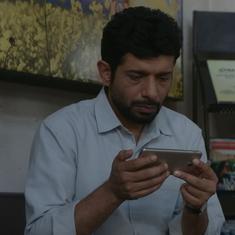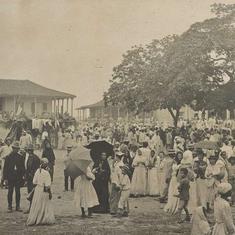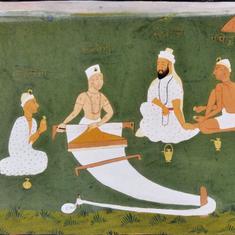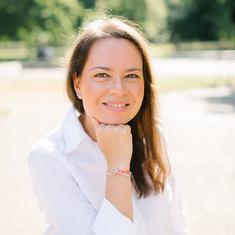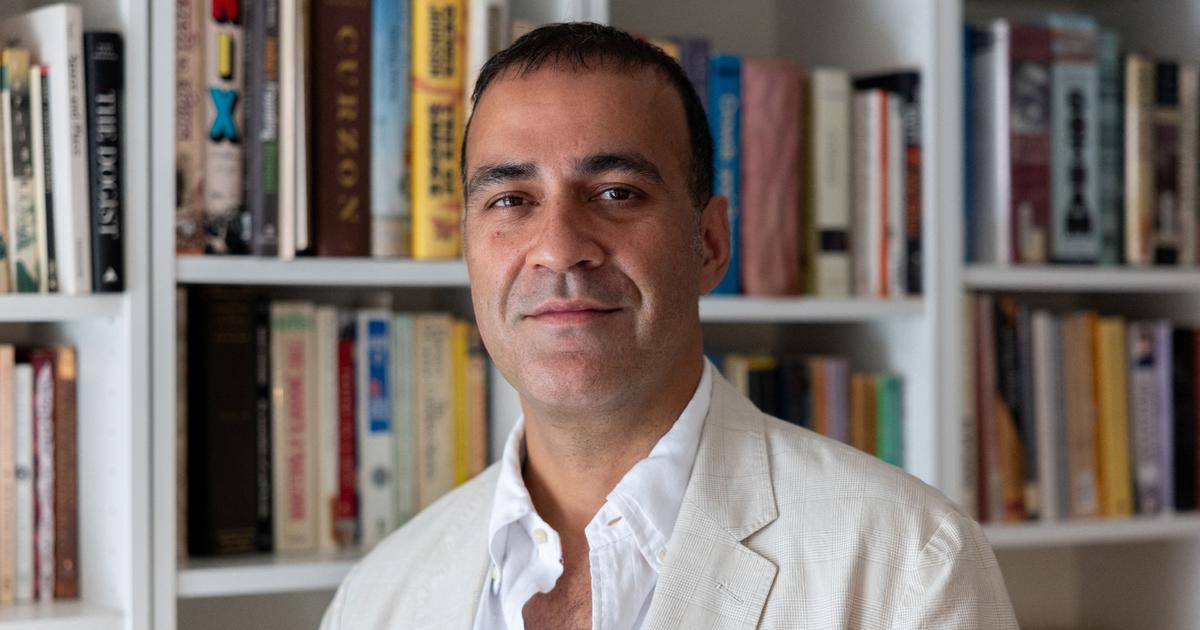On a morning of haunting heat in Seville, I sought out the tomb of Ferdinand III. There, in the Gothic cool, older Spaniards came and went, dropping to one knee and crossing themselves before the sepulchre of the Castilian monarch. There were men in staid, tucked-in shirts, grey checked with yellow, and women with short-cropped hair and knee-length dresses, slim belts around their waists. They sat in pews under a coffered ceiling, dourly communing with El Santo, the patron saint of what would come to be called La Reconquista – the man under whom five and a half centuries of Muslim rule had in 1248 come to an end in this town: Seville, or Ishbiliya, as it was known then.
On a banner above the altar, silver letters against a crimson ground read per me reges regnant (“By Me, Kings Reign”). The Virgin of Kings, dressed in orchid pink, gazed down at this scene of historical piety. Black-haired putti, prying and vaguely deviant, swarmed around her. The organ played. Latin chants filled the ribbed recesses of the largest Gothic church in Christendom, which retained as its belfry the fabled minaret (La Giralda, or “weather vane”) of the 12th-century mosque on whose bones it had been built.
It was not merely to escape the murderous heat of that June day – we were in the midst of an ola de calor in Andalusia, with temperatures reaching 115 degrees Fahrenheit – that I entered the tomb of Ferdinand III; it was because I wanted to begin my journey through the ghost lands of Muslim Spain by seeing with my own eyes an inscription I had heard about. I looked for it on the sarcophagus of the sainted king, which was partially concealed by the gold of an altar rail. Standing up among the worshippers, I caught a glimpse of what was no less wondrous now in real life than it had been in my reading. There were four plaques in the four languages of medieval Spain – Hebrew, Arabic, Latin, and Castilian – the last of these commemorating the victory of “the great king Don Ferdinand, Lord of Castile, Toledo, León, Galicia, Seville, Córdoba, Murcia, and Jaén” over a land that was soon to become toda España to the conquering Christians, Sefarad to the Jews, and al-Andalus to the defeated Muslims.
The plaques marked a Christian victory, but it was not (yet) one that came at the detriment of a plural Spain. The conquering king’s son – Alfonso X, El Sabio, or “the Wise” – had grown up steeped in the Arabic culture of al-Andalus. It was only natural that he should feel at home in its different liturgical languages. The plaques used the Hebrew calendar (the twenty-second day of Sivan 5012), the Islamic Hijri (the twentieth day of First Rabia 550), and the Gregorian (May 31, 1252, although history marks his death as the day before) interchangeably, as well as Quranic phrases, such as radi Allahu anhu, “may God be pleased with him,” to celebrate Ferdinand. But if there was something a little heartbreaking about this familiarity, this ease, this effortless switching between religious cultures as if between selves, it was because this Spain of three natures was on the eve of destruction.
“Remarkable – and poignant,” write the authors of The Arts of Intimacy: Christians, Jews and Muslims in the Making of Castilian Culture (2008), Jerrilynn D Dodds, María Rosa Menocal, and Abigail Krasner Balbale, “given that later historical perspective from which we now read them, knowing that Jews and Muslims would be expelled from Spain and from the memory of what had ever constituted the Castilian community – is the use of the place names Sefarad and Andalus to mean Spain.” But how does a place so steeped in diversity come unstuck? What makes a society succumb to that primal cry for a limpieza de sangre, a “purity of blood”?
Stepping out into the garish day, I stood for a moment at the base of La Giralda – it rose, a broad pitiless mass, some 350 feet into the blue, its summit covered in an enthralling, ever-repeating expanse of sebka, a pattern of interlacing multifoil arches (shabka means “net” or “ring” in Arabic) in which the play of light and shadow is reduced to a game of inches – considering the history of Islam in Spain.
There are, I want to say, three societies in the world – Spain, the Balkans, and India – that have known this particular kind of history, namely centuries of Muslim rule among large swaths of an unconverted population. Each of these places has experienced periodic cycles of religious violence and ethnic cleansing, whether it was the Balkans in the 1990s or the bitter partition of India in 1947 that left more than a million dead and caused the largest peacetime migration in the history of humanity. What makes Spain unique is that here, the aims of ethnic cleansing were fully realised.
There are still Muslims in the Balkans. There are, despite partition, which saw the creation of a predominantly Muslim Pakistan, still 200 million Muslims in India. Spain alone achieved pure erasure. Yet everywhere in this part of Spain, in tangible and intangible ways, we were surrounded by the remains of the Moorish past. They were there in the honey-drenched and cinnamon-dusted pastries (pestiños) that the Andalusians ate during Holy Week; there in the Spanish use of fulano to mean “so-and-so” (from fulan), a version of which we had in India, too; they were there in grand monuments, such as La Giralda or the Mezquita of Córdoba, and the Alhambra in Granada. But they were also there in quiet, unspoken ways, such as in the Alcazar (from al-qasr, or “castle”) of Carmona (Qarmuna), twenty miles away from Seville. The old Moorish castle sits in the midst of the classic Spanish white town at the crest of a hill of burnt-yellow grass, a brooding presence with its horseshoe-arch entrance and its shattered crenelations. Shards is the word historians have used to describe these vestiges, and they exist everywhere – consider how almost one-third of English’s vocabulary can be traced to the Norman Conquest of 1066 – but what makes them radioactive in Spain is that the heirs to that past were systematically expelled. The silence one feels then, standing in the patio of the church of El Salvador in Seville, where the arches of the old mosque, with their characteristic capitals of Roman spolia, are still visible amid mashed oranges lying at the feet of trees laden with fruit, is not natural. It is an enforced silence.
“Seville is a city of shadows,” writes VS Pritchett in The Spanish Temper (1954), “which tunnel under a dense foliage that is dead still, and pleasure seems to walk with one like a person, when one is alone. There is never too much light.” On that first day, walking through narrow streets decked with shadow curtains – cortinas de sombra – clinging to an ever-shrinking margin of shade, I was simply dazed by the Saharan heat. I’d spent many summers in the hills above Seville, but I had never known it to be so hot so early in June. In bars, into whose awnings sprinklers had been fitted that released timed bursts of cooling mist, I could make out, through their permanent air of afternoon, wainscotings of azulejo – literally “little stones” in Arabic, glazed tiles cut in geometric patterns.
I was in a European town of white buildings picked out in browns, ocher, and burnt umber, trying to imagine its Muslim past, aware that to even think of these categories as mutually exclusive was itself a distortion of history. Spain, like India, had been part of that original Arab expansion when, within a century of the Prophet Muhammad’s death in 632, the armies of a new conquering faith reached as far west into Christian Europe as Poitiers in France, where they were defeated by Charles Martel, Charlemagne’s grandfather, and as far east as Hindu Sindh and Multan, in what is today Pakistan. “A hymn to the virtues of exile” is how Menocal describes the history of al-Andalus in her 2002 book, The Ornament of the World. It opens with the tale of an exiled Omayyad prince, Abd al-Rahman I, escaping a massacre in Syria, from which he fled to North Africa as his family’s sole surviving heir, and founding the Emirate of Córdoba in 756. The Omayyads, who traced their origin to the Mecca of the Prophet Muhammad, were Islam’s first dynasty. They had conquered great stretches of the classical world, from Sassanid Persia to Coptic Egypt and the Byzantine Levant. In 711, within a year of the conquest of the western reaches of India, Tariq ibn Ziyad had led a Berber, Syrian, and Yemeni army across the Strait of Gibraltar (also known as Jabal Tariq, Tariq’s Mountain), defeating the Visigothic king Roderic. The Visigoths (western Goths) were one of many Germanic tribes who had taken up the mantle of Rome, ruling Spain since the fall of the Western Roman Empire in 476.
Abd al-Rahman I, also known as al-Dakhil, or the Entrant, gave the Omayyads a second lease on life in Spain, even as their power was being smashed throughout the rest of the Islamic world. A new dynasty was on the rise. The Abbasids (of Harun al-Rashid and Arabian Nights fame) would go on to replace the Omayyads as caliphs – from khalifa in Arabic, “successor” (to Muhammad) – turning Baghdad into the capital of the now-vast Islamic empire. But what makes the history of Islam in Spain read, as W Somerset Maugham writes in The Land of the Blessed Virgin: Sketches and Impressions in Andalusia (1905), “far more like romance than like sober fact,” is that it opens with the unlikely establishment of Abd al-Rahman’s emirate, which at its apogee in the tenth century would comprise the entirety of Spain, save for the Atlantic North. Al-Andalus is the term we give to all of Muslim Spain, its borders expanding and shrinking over the course of eight centuries, political configurations changing, emirates rising and falling. (Andalusia, the province, derives its name from the same word, for it was here in the south that the Islamic presence lasted longest.) The demise of al-Andalus came in 1492, the year Christopher Columbus sailed to America, with Boabdil, the last Muslim ruler of Spain, handing over the keys of Granada to the Catholic monarchs, Isabella I of Castile and Ferdinand II of Aragon. “Don’t cry like a woman for what you could not defend like a man,” Boabdil’s ballbreaker of a mother is said to have told him (no doubt apocryphally), as he cast a teary glance back at the city he would never see again, emitting what my guide at the Alhambra described as el suspiro del moro: “the sigh of the Moor.”
Spain is a land of churches upon mosques upon churches. This was not new in itself. I had spent months in Damascus, where the Omayyad mosque had been built on the remains of an old Byzantine church that, in turn, sat on the Temple of Jupiter. In India, I had seen mosques reuse the columns of old temples that filled the imprints of Buddhist viharas. There is nothing more natural (not to mention practical), when conquest is swift and building materials scarce, than to repurpose the sacred to fit the demands of a new time. What was unnerving was the silence of the people who might have been heirs to these ruins. As evening fell and the dome of heat lifted, I found myself at an opening at the Centro Andaluz de Arte Contemporáneo, an old monastery turned into a ceramics factory that had been converted into a museum. Talking to the vivacious Margot Molina, a former journalist at El País, I expressed my interest in the role of al-Andalus in the Muslim imagination.
Her reply reinstated the silence that had been stalking me all day. “But you cannot ask them,” she said, “because they’re not here.”
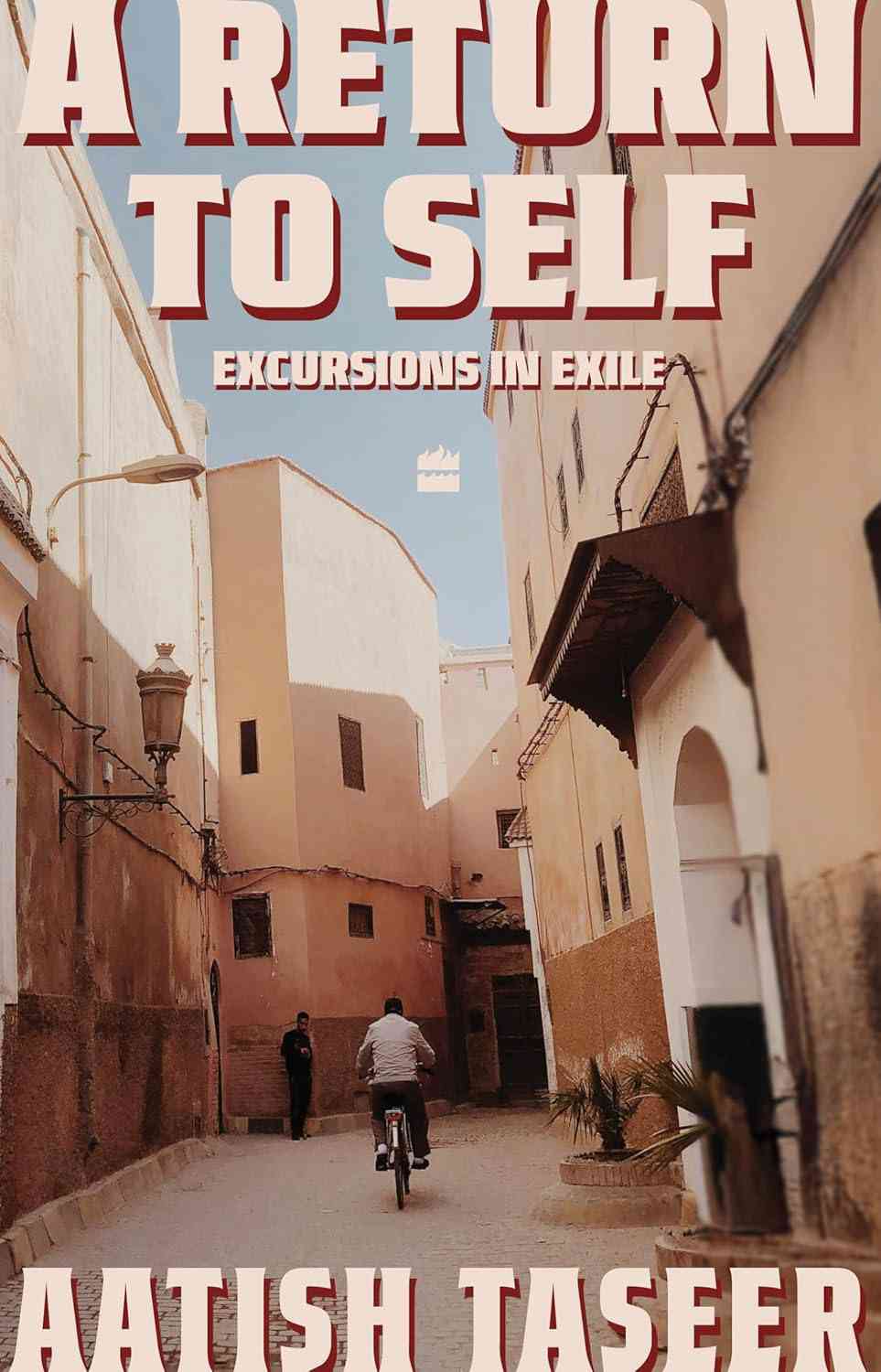
Excerpted with permission from A Return to Self: Excursions in Exile, Aatish Taseer, HarperCollins India.


